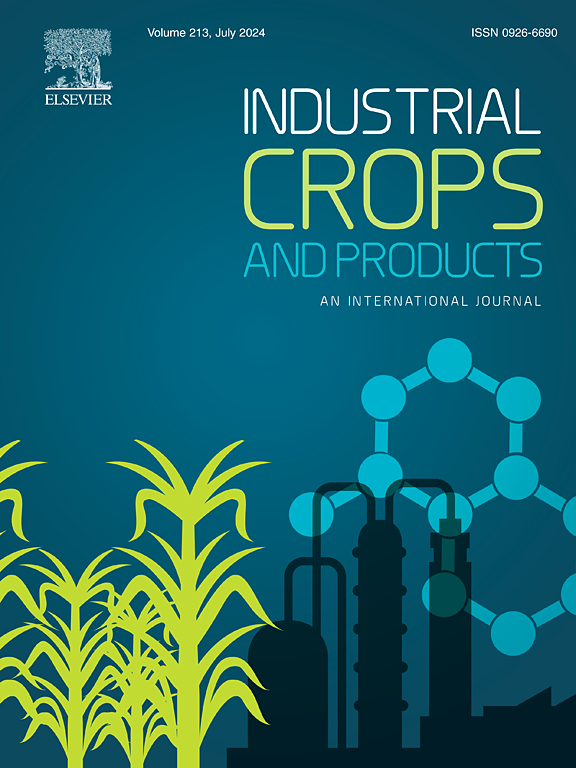A sustainable method for the preparation of durable, biologically non-toxic anti-mildew bamboo
IF 6.2
1区 农林科学
Q1 AGRICULTURAL ENGINEERING
引用次数: 0
Abstract
Moso bamboo possesses the features of fast growth, high mechanical strength and environmental friendliness, but its application is limited due to its susceptibility to fungal infection. In contrast, the reported anti-mildew strategies have the technical bottleneck of easy loss and high toxicity of anti-mildew agents. This work shows an efficient strategy for obtaining a stable, biological, non-toxic anti-mildew bamboo. Selective oxidation methods were used to obtain dialdehyde cellulose (DAC) on the bamboo surface, to achieve dialdehyde groups, which were efficient for anti-fungal infection. The modified bamboo's micro-structure, anti-mildew, stability and cytotoxicity were investigated by setting the ratios of NaIO4 to bamboo. The optimal mildew resistance achieved when the ratio of NaIO4 to bamboo was 5 % (B@5 %), displaying a durable anti-mildew performance, of which the Aspergillus niger control efficiency of 100 % after 30 days of anti-mildew test. The B@5 % can resist 200 times of mechanical friction and maintain 50 % anti-mildew efficiency, showing excellent chemical stability under different pH conditions. More importantly, B@5 % has no toxic damage to cells in vitro. The above outstanding properties show that the modified bamboo has great potential in industrial and food-grade mildew-proof bamboo.
一种制备耐用、生物无毒防霉竹的可持续方法
毛竹材具有生长快、机械强度高、环境友好等特点,但易受真菌感染,限制了其应用。相比之下,已有的防霉策略存在防霉剂易流失和高毒性的技术瓶颈。本研究为获得稳定、生物、无毒的防霉竹提供了一种有效的策略。采用选择性氧化法在竹材表面制备双醛纤维素(DAC),得到具有抗真菌活性的双醛基团。通过设定NaIO4与竹子的比例,考察了改性竹的微观结构、防霉性、稳定性和细胞毒性。当NaIO4与竹子的比例为5 % (B@5 %)时,抗霉效果最佳,抗霉效果持久,抗霉试验30 d后,对黑曲霉的防霉效果为100% %。B@5 %可抵抗200次机械摩擦,并保持50% %的防霉效率,在不同pH条件下表现出优异的化学稳定性。更重要的是,B@5 %对体外细胞没有毒性损伤。上述优异的性能表明,改性竹在工业级和食品级防霉竹方面具有很大的潜力。
本文章由计算机程序翻译,如有差异,请以英文原文为准。
求助全文
约1分钟内获得全文
求助全文
来源期刊

Industrial Crops and Products
农林科学-农业工程
CiteScore
9.50
自引率
8.50%
发文量
1518
审稿时长
43 days
期刊介绍:
Industrial Crops and Products is an International Journal publishing academic and industrial research on industrial (defined as non-food/non-feed) crops and products. Papers concern both crop-oriented and bio-based materials from crops-oriented research, and should be of interest to an international audience, hypothesis driven, and where comparisons are made statistics performed.
 求助内容:
求助内容: 应助结果提醒方式:
应助结果提醒方式:


